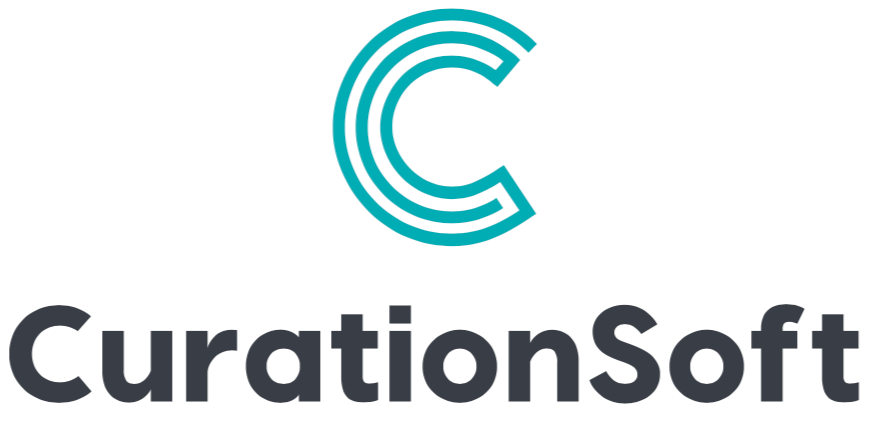Mastering Content Outlines for SEO and Marketing Success
Content outlines are a powerful tool for SEO and content marketers. When crafted correctly, they can help you create organized, well-structured pieces of content that have the potential to rank highly in search engine results pages (SERPs). By outlining your topics before writing or creating videos, podcasts, and other forms of media, you’ll be able to organize all your ideas into one cohesive piece – without worrying about forgetting any critical points along the way.
In this blog post, we will explore why bloggers and content writers need to use an effective content outline when crafting their work and provide helpful tips on optimizing yours so that it stands out from competitors.

What Is a Content Outline?
A content outline is a document that outlines the main points of your article or blog post in a logical sequence. It serves as an organizational roadmap for writers, helping them stay on track while they write their pieces. A content outline is based on two things:
Creating an effective content outline can save time and simplify the writing process.
Why Are Content Outlines Important for SEO and Marketing?
Content Outlines are essential for SEO and marketing because they help to structure content in a way that is easy for both search engines and readers to understand. A well-optimized outline can also improve your chances of ranking higher in SERPs.
★ Improved Flow Of Content
Start the outline by organizing ideas into topics, subtopics, and supporting points. This helps to ensure the content flows logically from one point to the next while providing valuable information on the topic.
★ Easy Catch Up With Details
Additionally, it makes it easier for readers to find what they’re looking for quickly without reading through large blocks of text or skimming through irrelevant material.
★ Builds Topical Authority
Researching thoroughly before creating an outline provides more accurate, authentic, and valuable information showing your expertise on that subject, further building your topical Authority. Topical Authority is a crucial ranking factor search engines use to interpret the content and rank it in the SERPs: A measure of how deeply and accurately the writer has covered a topic.
This will also maintain the reader’s engagement by avoiding any potential misunderstandings or confusion due to incorrect facts in the articles.
★ Gains the Trust Of The Reader
By creating an outline before beginning your project, you’ll be able to see how all the pieces fit together and ensure that nothing important gets left out or you don’t get off topic. Hence, reading a clear and relevant blog post about their experience builds trust between them and your brand.
Content outlines provide a framework for SEO and marketing teams to create compelling content optimized for search engines and resonate with their target audience.
Key Takeaway: Creating an effective content outline before beginning your project has several benefits, including saving time, staying focused on relevant topics, organizing ideas into a logical order, ensuring accuracy with facts/data, avoiding repetition, creating consistency throughout the piece by using similar language/tone/style, etc., and allowing room for creativity while still keeping on track with the overall goal of the piece.
How To Create An Effective Content Outline
Creating a content outline easy: Here are some practical tips on how to create a well-structured content outline:
1 ➤ Recall Your Goal
The first step towards creating an effective outline is to know your goal and keep that in mind throughout the article. There can be many goals, some of them can include:
For example, my title is Building Content Outlines; my goal throughout the article will be to rank my site by adding keywords and keeping the readers engaged.
Suppose your title is What Is Local SEO, so your goal can be to attract small businesses and convince them to hire your SEO agency or any other.
2 ➤ Choose A Seed Keyword
Decide on what you want to write about and what should be the main keyword of your content.
■ How To Find The Main Keyword?
Even if your goal is not to rank for keywords, adding them to your content can bring remarkable results and increase traffic to your site.
You can decide on the keyword by putting your main idea on Google and checking out the top-ranking sites and their titles.
I typed “content outlines,” and I can see the top-ranking sites here.
Now, I can see that my primary keyword will be Content Outline, and other keywords to include in the article can be:
■ Easiest, Quickest, And Simplest Method To Find Keywords
I got to know the other keywords through:
3 ➤ Think Of A Unique Title
Now that you know the top-ranking site titles
think of a unique title.
Here are some ideas:
4 ➤ Brainstorm Ideas
Start by brainstorming ideas related to your topic. Write down any topics or subtopics that come to mind, even if they seem unrelated initially, to help you generate more ideas and better understand what needs to be included in your content outline. Then put these ideas on Google search to find more related keywords by the methods above.
5 ➤ Organize Your Ideas
Once you have enough ideas, start organizing them into sections with clear headings and subheadings. Make sure each point supports the article’s main idea and flows naturally from one section to another. Break out things into H2s, H3s, and H4s to avoid making it a wall of text and making things more clear.
6 ➤ Refining Your Content Outline
After creating an initial draft of your content outline, go back through it and refine it further by adding additional details or clarifying specific points where necessary. This will ensure everything fits together nicely when writing up the final piece later.
Researching thoroughly is essential when creating an effective content outline. Ensure that all facts are accurate and up-to-date before including them in your article. Additionally, consider the interests or needs of your audience while researching so that all information is tailored to them.
Optimizing Your Content Outline
Follow these quick tips to master your content outline!
By following these tips, you can create an effective content outline to help your SEO and content marketing efforts reach their full potential.
Types of Informational Structures for Creating a Content Outline
When creating a content outline, you can use 4 different structures for adding the information:
➼ Linear Structure
It is the most common type of organizational structure that involves breaking down ideas into steps or points that lead from one to another. Linear structure is useful when presenting information in a step-by-step manner, such as instructions on how to do something or outlining the main points of an argument. It’s also great for highlighting key facts and figures since it keeps everything neat and orderly.
For example, suppose you are writing about SEO best practices. In that case, you can use this linear structure to list out each individual practice with supporting evidence beneath it for readers to refer back to later on if needed.
➼ Hierarchical Structure
This one is also popular, where ideas are arranged according to importance or relevance.
The hierarchical structure is helpful when trying to emphasize certain aspects over others based on their level of importance or relevance within the context of your topic at hand; this helps keep readers focused on what matters most while still providing them with all the necessary details they need in order to understand the bigger picture better.
For instance, if you were discussing digital marketing strategies, a hierarchical structure would allow you to separate tactics like email campaigns versus social media advertising. This will help readers quickly identify which ones should take priority over others depending on their goals and objectives.
➼ Mind Mapping
This allows for more creative thinking by connecting related topics together visually.
Mind mapping offers a more visual approach by allowing users to connect related topics together through images and text bubbles instead of traditional bullet point lists; this makes it easier for the writer who prefers visuals over words alone
➼ Ishikawa Diagrams
Ishikawa diagrams offer an organized way of identifying cause-and-effect relationships between elements within a topic. This means that users can trace back problems or issues much faster than normal since everything has already been laid out beforehand rather than having to read through large amounts of material first just so they know what is going wrong exactly (which isn’t always possible due to limited time constraints, etc.).
Creating a content outline with the proper informational structure can help to make sure your content is organized, easy to follow, and engaging for readers.
Best Practices for Creating A Content Outline
After learning how to create a content outline, here are some best practices for writing an effective content outline:
✧ Researching Your Topic Thoroughly
Before creating a content outline, it’s important to research your topic thoroughly. Make sure you have all the necessary information before beginning to write so you can accurately represent the topic at hand.
✧ Know The Users’ Search Intent
When crafting a content outline, always keep your audience in mind. Think about who they are and what they want to know when searching for any topic. This will make sure that the final content piece is the one they were looking for.
✧ Ensure Relevance and Accuracy
Carefully review your content outline to ensure that all elements are relevant and accurate according to current standards or trends related to the subject matter. This will help readers obtain reliable information from reading your post or article.
Measuring The Success Of Your Content Outline
Measuring the success of your content outline is an important step in understanding how effective it is. It’s also a great way to identify areas for improvement and ensure that you are providing value to your readers. Here are the top three ways to measure the success of your content outline:
1. Analyzing Traffic Sources and Engagement Metrics
Analyzing traffic sources and engagement metrics can help you understand which channels are driving the most visitors to your website, as well as what type of content they engage with most. For example, if you find that organic search is bringing in more visitors than social media, then this could be an indication that optimizing your SEO efforts may be beneficial.
Additionally, looking at metrics such as time spent on the page or bounce rate can provide insight into whether users are finding value in what they read or not.
Here are some of my favorite tools to analyze website traffic:
- Semrush
- Google Search Console
- Ubersuggest
2. Evaluating User Feedback and Reviews
Gathering feedback from readers who have interacted with your content can provide valuable insights into how successful it has been. If readers leave comments or reviews about their experience with a particular piece of content, take note of these responses so that you can adjust accordingly for future pieces.
Additionally, if there were any issues reported by readers (such as broken links), make sure to address them promptly so other users can easily access the same material later on down the line.
3. Tracking Conversions
Tracking Conversions from published content can provide insight into which pieces have had the most impact on sales or leads generated through marketing campaigns. This data will give an indication of which topics resonate best with audiences, allowing marketers to focus their energy on creating related pieces in order to further increase conversion rates.
Measuring the success of your content outline is an essential step in any successful content marketing strategy. By tracking and analyzing key metrics, you can gain insight into how well your content resonates with users and then adjust it accordingly.
FAQs Regarding Content Outlines
Conclusion
Content outlines provide structure to your content, making it easier for search engines to index and rank it. They also help you organize your ideas, so the readers can easily follow the flow of information within your article or blog post. When crafting a content outline, consider using one of the informational structures discussed above and follow the best practices, such as including keywords throughout the text and optimizing headings for readability. By doing so, you’ll be able to create high-quality content outlines that will help boost SEO rankings while providing value to readers.
Are you looking for an effective way to curate content that will boost your website’s visibility and improve search engine rankings? Curationsoft.com can help. Our easy-to-use platform helps you create custom outlines of quality content in minutes, saving time and effort while giving your site the edge it needs. Let us show you how our automated solutions can take care of all your content marketing needs today!






